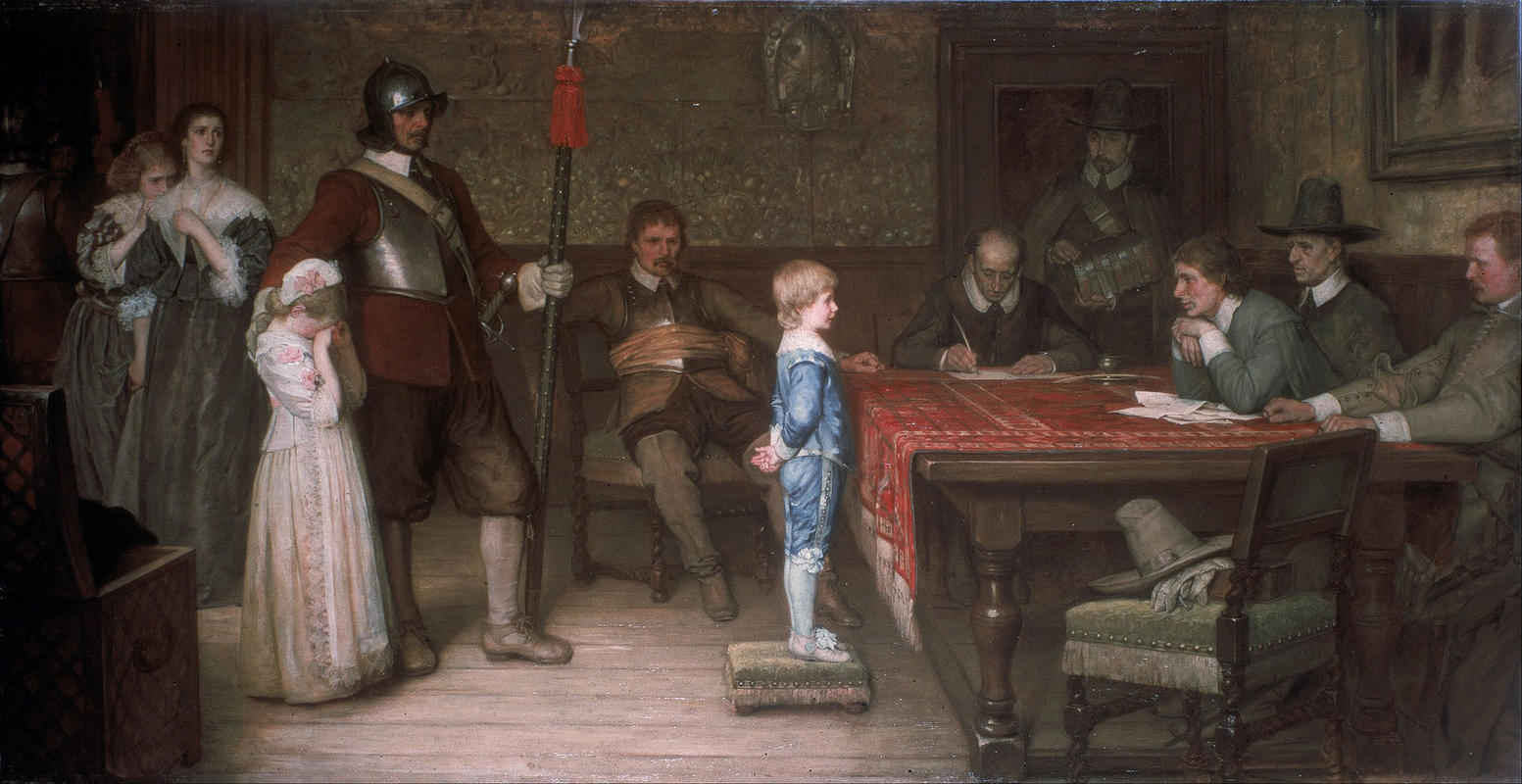More about And When Did You Last See Your Father?

Contributor
Picture this: you are a sergeant in an army tasked with bringing an end to an insurgency that has been prolonging a war in your home country.
You know that one of the leaders of this enemy force is in the area, but don’t know where he is hiding, and the only person that might know his location is seven years old.
This should be easy to imagine as you are looking at it; Yeames has sought to capture this particular situation in And When Did You Last See Your Father. This picture is supposed to take place during the English Civil War, a decade long conflict between the British Monarchy and Parliament. Ironically, they were fighting over who had rights to levy troops to go to war. In a weird twist, it was the royalist Monarchy and not the Parliamentarians who were the rebels in this fight. This is why the boy, who is the one being interrogated, is the best dressed person in the room. And yes, if you were wondering, the boy’s outfit is based off of Thomas Gainsborough’s The Blue Boy.
Luckily, the scene depicted is fictional. Yeames lived nearly two centuries after this conflict and often deviated from literal history in his work. The artist preferred to invent a scene that captured the feel of the times, similar to a modern biopic. However, none of this makes the message any less powerful. Its purpose is to remind people that children exist in the realms of war, a tragic reality that is relevant even today. In fact, a photographer with the New York Times was able to catch a strikingly similar image of two U.S. soldiers attempting to interrogate a child of around the same age, and the article in which it is featured shares the paintings name.
This is the common interpretation of the painting, however like many things in the art world, it goes deeper. Yeames himself had an interesting relationship with his father. The man was the British Council for Russia so, while technically British, Yeames was born in the Russian port city of Taganrog. Then in the midst of his strange upbringing, his father died. Yeames was only seven. Afterwards, the young artist was moved to Germany. So while this picture could be taken in a historical context, it also could be understood in the personal context of Yeames’ life, a dramatic snapshot that refers to the autobiographical loss.
This is Yeames most famous painting by a wide margin, and it has enjoyed a long legacy inspiring a slew of other works, from the New York Time Article mentioned above, to a coming of age drama starring Colin Firth. The piece currently stands next to other message-heavy paintings, such as John William Waterhouse’s Echo and Narcissus, and Henrietta Rae’s Ophelia.
Sources
- Fowle, Francis “William Frederick Yeames: Amy Robsart” Tate 12/01/2000 https://www.tate.org.uk/art/artworks/yeames-amy-robsart-n01609
- Hoakley “And When Did You Last See William Frederick Yeames?” The Electric Light Company 05/03/2018 https://eclecticlight.co/2018/05/03/and-when-did-you-last-see-william-f…
- Van Agtmael, Peter Farrell, Stephan “And When Did You Last See Your Father?” The New York Times 12/09/2009 https://atwar.blogs.nytimes.com/2009/12/10/and-when-did-you-last-see-yo…
- Web Contributor “English Civil Wars” History, 06/07/2019 https://www.historyonthenet.com/when-did-you-last-see-your-father
- Web Contributor “When Did You Last See Your Father” History on the Net, viewed on 09/25/2019 https://www.historyonthenet.com/when-did-you-last-see-your-father











